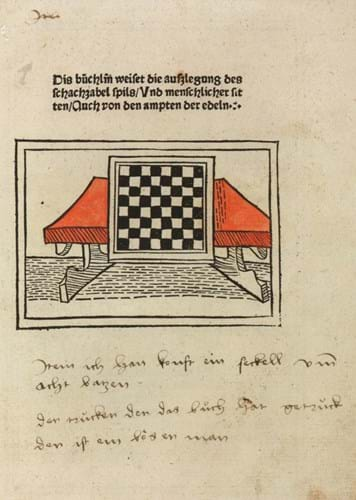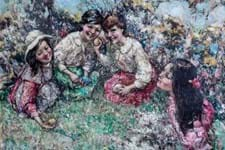
Books and works on paper
RECOGNISED as the earliest recorded work on chess, De Ludo Scachorum was written in the late 13th or early 14th century. This work by Jacobus de Cessolis, a Dominican from Lombardy, describes the pieces, moves and strategy of this most famous of board games, but its author’s original aim was to use chess as a didactic allegory of the human condition and social order.
Some three centuries passed before it was first printed in 1473, at Utrecht, and in 2015 a copy of that edition sold for £45,000 at Christie’s. However, a later, 1483 copy (in a modern binding of reversed pigskin) offered in the King Street rooms on December 1 reached £50,000.
Known in fewer than a dozen other copies, all of them now in institutional collections, this was a fourth German edition, printed in Strasburg by Heinrich Knoblochtzer.
Once in the famous Donaueschingen Library, the Fürstenbergische Hofbibliotek, it made a first auction appearance at Christie’s South Kensington in 1992, when it was the most expensive of a number of both printed and manuscript editions of De Ludo Scachorum offered as part of the Robert Blass chess library. It sold on that occasion for £17,000.
De Cessolis’ work was enormously influential, much reprinted and quoted in many later works, but of particular English interest is the fact that in 1474 a French version was translated and printed in Bruges by William Caxton as The Game and Play of the Chesse. It was only the second book to be printed in English.
In 1974 a copy of that Caxton edition, lacking four leaves of text, made £44,000 at Sotheby’s, but auction records suggest that no other has been offered since then.
The auction record for the work remains with an edition printed in Florence in 1493-94 and remarkable for its 13 exceptionally fine Florentine woodcut illustrations.
In 1994 a copy in the Italian section of the Otto Schaefer library made $90,000 (then almost £61,000) at Sotheby’s New York.









